Trending
Opinion: How will Project 2025 impact game developers?
The Heritage Foundation's manifesto for the possible next administration could do great harm to many, including large portions of the game development community.

Featured Blog | This community-written post highlights the best of what the game industry has to offer. Read more like it on the Game Developer Blogs or learn how to Submit Your Own Blog Post
Gachas account for a significant part of the hard currency spent of any game that includes such mechanic yet there is little information about the types of gachas and their design differences. In this post we will dive into the specifics of each type.

If you were to dive into any single game that includes gacha in their repository of monetization components, you would easily discover that it accounts to anywhere between 60 to 90% of the hard currency spent in game.
Gachas originated in Japan and became widely used in the eary 2010s. It did not take long before its success was noticed by Western game developers and it is today included in most games.
In this post, we will dive into the design specifics and considerations for each type of gacha.
As an introduction, regular gachas and lootboxes are pretty much alike in terms of how they functionally behave. Players usually pay in-game currency to “spin” or “roll” to pull a random reward (a character, a card or any collectible) out of a defined loot table where rewards are weighted according to the rarity of the prize, content replacement exists between tries, which means that the loot table remains consistent try after try (Every pull is an independent event).
The 3 main differences between the terms are the following:
Etymology: The term “Gacha” originated in Japan, which was a shortened variant of Japanese “gachapon”, while the term “Loot Box” other originated in the West.
Variety: Gachas can take plenty of different forms and designs while loot boxes, for the moment, remain fairly simple.
Impact on progression: An argument could be made around the influence of the mechanic on the overall game. Loot boxes can be ignored in most cases as they include mostly skins or accesories that are not required for game progression while with gachas, the whole game progression typically revolves around engaging with this mechanic.
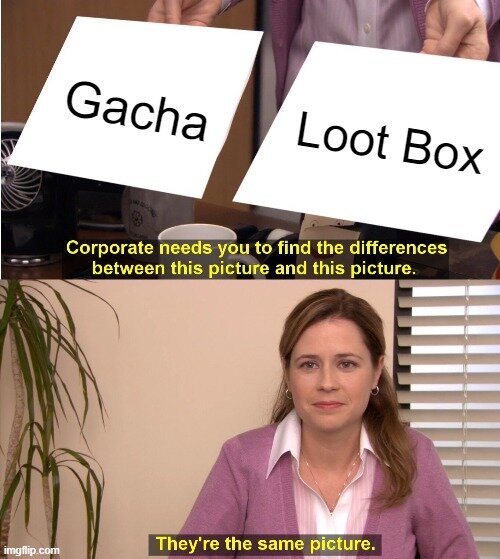
The concept behind the Box Gacha is similar to the regular gacha. The main differences are:
Replacement does not exist across the contents of the box. This means that each time the player pulls an item from the box, the item does not get replaced, thus increasing the chances of pulling the desired prize out of it, incentivizing the next purchase.
Usually the rewards are not weighted, so every item has the same chances of being pulled.
Box Gachas are usually time limited and tied to events.
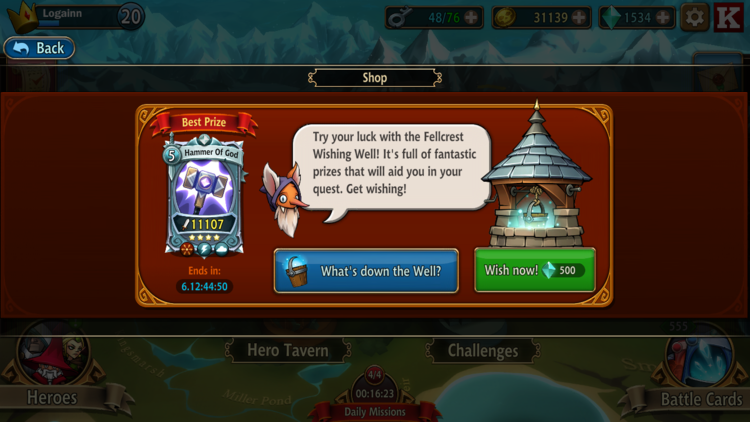
Box Gacha presentation in BattleHand.
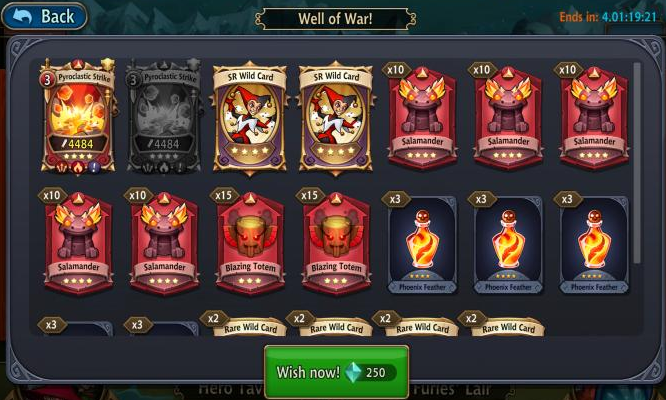
Lucky pull in BattleHand’s Box Gacha.
Factors to consider when designing your Box Gacha:
Reward value: What is the chase item or character (These usually are powerful, useful or very rare). If the chase item is not present, the appeal of the box is non-existent.
Number of pulls: How many items of each type and rarity will live in the box? A 50-item box with 1 chase item won’t be as appealing as a 20 item box with 2 chase items in it.
Pricing: The cost per pull and the total cost of the box are important components to consider. What type of spender are you targeting with this box? Are you aiming for the masses or just to your high spenders? Pricing can go anywhere from 20 cents the pull to $5 or more.
Replayable?: What happens when all the contents of the box are pulled? Will you allow your players to re-start the box or will you close the loop there?
Deal or not?: In most cases, the box is balanced according to your base item prices (which is why the chase item is so important), but you might want to think of a box as a special deal for players, where they can acquire those items at a lower cost compared to the store base prices (in which case, you might want to think of it as a particularly large bundle with a luck component integrated into it).
Know your player’s odds: We talked about cost per pull and box cost, but equally important is to consider the player experience and the average cost. When will the player unlock the chase item on average? What follows is a short example of a box with 22 items and 2 chase items. It includes the chances to pull the chase items in the next roll or by roll number N.
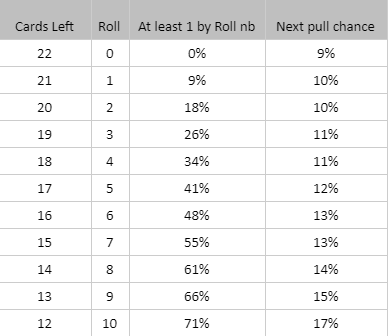
A step gacha is a set of incremental gacha offers that must be bought in succession. With each pull, the price increases, and so does the value and volume of the rewards being received.
Replacement exists between pulls.
Rewards are usually weighted.
Typically, some tiers will have guaranteed items or increased chances of dropping certain desirable items to incetivize buyers to spend with the intention of buying their way to a given tier.
Once the maximum tier has been reached, the player keeps pulling from the loot table that belongs to that tier.
Step Gachas are usually time limited and tied to events.
The beauty of this system is that it enables flexibility in pricing (early pulls are cheap, accessible and useful for all players) while it keeps depth of spend in the higher tiers (by guaranteeing certain rewards, increasing price and value). Executed well, they drive up spend and provide value to spenders at all spend ranges.
The chase item in this case is usually place in the later tiers, ensuring a minimum revenue amount per spender in order to get such prize.
Generally speaking, most factors to consider are the same as with the box gacha with some new additions:
Price steps: How many steps are you going to include? What’s your minimum starting price and what’s your maximum price?
Reward scalability: You need an economy with some depth to be able to pull this trick, which is why you typically only see this type of gacha in RPGs and the occassional CCG. You need to start simple, but with enticing rewards and scale things up with each tier.
Chase item placement; In what tier are you going to place that chase item? What is it going to be? As mentioned, these work best when paired with events and they are relevant to these (i.e. a card that provides a bonus during the event).
Enable visibility: No matter how good your balancing is, if players cannot see how the step gacha scales directly from tier 1 all the way to your maximum tier, you will be missing the shot.
I am sure you have figured this one out already. A step box gacha is a set of incremental box gacha offers that must be bought in succession. With each box, the price increases, and so does the value and volume of the rewards being received.
Replacement does not exist.
Rewards are not weighted.
This is a theoretical model that I have not seen introduced anywhere yet (it probably exists somewhere!) and mixes the principles and strengths of both the step and the box gacha.

This system not only enables flexibility of pricing and depth of spend, it also encourages the player to complete the boxes chasing those items and functions as a safeguard for the developer from a minimum performance per player perspective. In the example above, to get the top chase item (tier 3), the player needs to empty boxes 1 and 2.
Finally, it gives the player some agency and a chance to beat the system if they get lucky on their pulls in the later box.
The Sugoroku Gacha takes the form of a game board with different nodes.
Each node has a different reward (sometimes gacha, sometimes fixed).
Progressing through the different nodes requires to spend some form of soft currency that is heavily controlled by the developer (and that is obviously designed engage the player first to later on monetize him via IAP or Ads).
Typically, the player moves on the board whenever he rolls on the gacha and the rewards on the board get better as he advances, but there are game modes built around this concept.
Finding examples in the West is complicated as this is not a common type of gacha here. Yevgen Grishenko’s gacha for beginners guide suggests Monster Legends as a comp, in which case I’d add some Marvel’s Contest of Champions events as comps too. The pay to roll component becomes less visible as it becomes hidden by an energy mechanic and a skill component that is carefully tuned to put pressure on the player (see how the lines blurry between gameplay and gacha?). I suggest you read his breakdown if you are interested in more details.
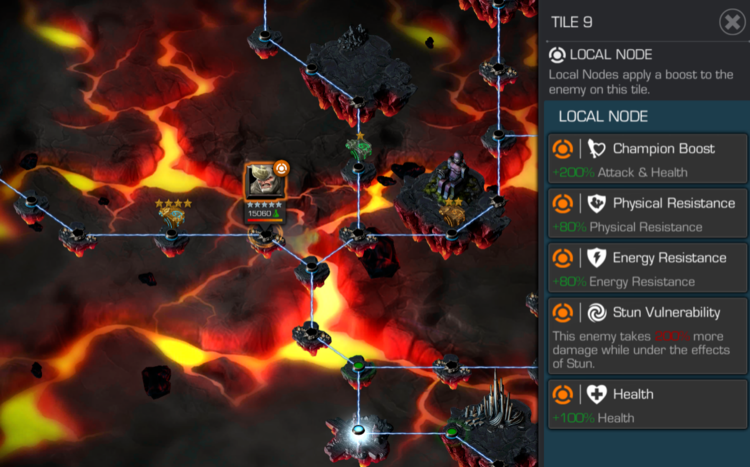
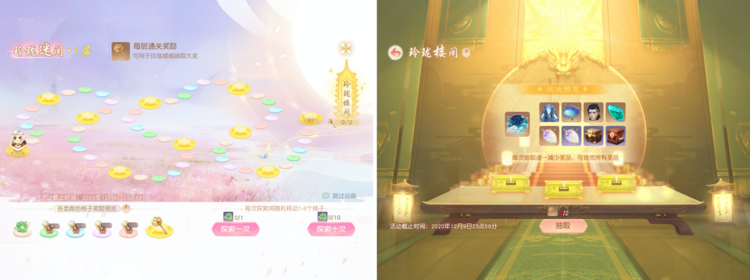
I find the Sugoroku gacha similar to the Step gacha in many ways, so you can use those design considerations as a starting point. What follows are the more specific ones that you will need to consider when designing your Sugoroku gacha:
Energy distribution: How are you going to allow players to earn energy to interact with the system? Ads? IAP? Gameplay? What is the balancing there? What is the cost per point?
Energy cost per node: As you start building your game board, how much is each step going to cost? Is cost going to be reflective of the reward?
Difficulty: If you are going with the gamified version, you want to make sure that you give your players enough energy to complete the board, but that it is so scarce that any misstep will force him to interact with an alternative source of energy (IAP or Ad).
Revive or not? I am thinking of a hero collector with fighting mechanics in the context of a gamified board here, but the bottomline is… are you going to let your players continue if they screw up or not? And what is the cost for that?
The main advantage from the Sugoroku gacha, in my opinion, is that it can be gamified and embeded in your game. It feels organic and if well designed, it can engage players, so it becomes both a monetization and a retention tool. It can also be tied with other gachas.
Granted, if you decide to go with the basic version, your design will be a lot simpler.
The Scratch Gacha (also known as consecutive gacha) leverages spending in bulk by giving the player tickets when rolling several times at once (bigger purchases). These tickets guarantee rarer items once a set number has been reached.
It usually comes with a bulk discount as well to make the overall package more appealing (buy 10, get 1 free).
This is a fairly simple implementation, as all it requires to consider is rewards, pricing and the ticket thresholds.
Rewards from the tickets might be:
Guaranteed (reach 10, get X rare character)
Gacha based (reach 10, get a rare character out of a pool)
The Pity System gained popularity with Hearthstone back in 2014, but not a lot of games use it these days. Essentially, it guaranteed a drop for every rarity of card present in the game after a number of pulls. Whenever the reward is given, the system resets to 0.
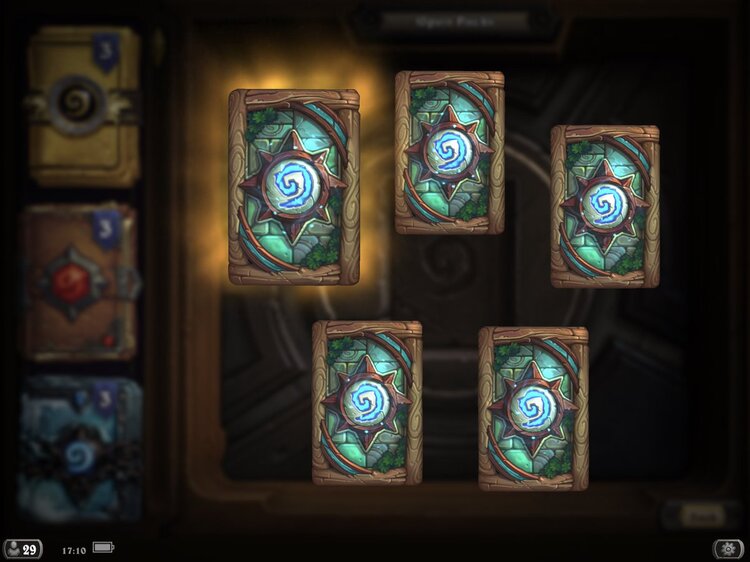
Using Hearthstone as an example, the pity numbers are as follow:

If you are playing the game, note that this system is applied per expansion card pack (so it isn’t shared between different pack types).
Now, when it comes down to the design of the pity system, the logical approach as a designer would one of 4:
Make the curve linear, so chances increase in the same fashion step by step.
Make the curve exponential, so chances increase slowly but wildly increase in the later steps.
Manually adjust your curve per step or just introduce a limit or counter on the set number that you wish to target for the player.
The Supercell way, which is applied to the chests that you earn after each victory in regular 1v1 or 2v2 matches. This is essentially, it is a hidden box gacha: The player will be pulling rewards (chests) out of a defined set rotation with no replacement (which ensures that at some point he will get the best chests) and the set will refresh once the rotation is finished.
The questions that you need to answer are:
On average, after how many pulls do I want the player to to go through before getting this reward?
What’s the minimum?
What’s the maximum?

Hearthstone Pity Timer Analysis from Reddit user u/Pi143
You can find other hit games like Genshin Impact using Pity systems.
In my opinion, they are just 2 sides of the same coin. One is more front facing (consecutive) while the other feels more organic or natural (pity) to the player. One will encourage players to change their spending habits while the other is applied to all players regardless of their spend levels.
So, are you looking for ARPPU (Average Revenue per Paying User) or UX? If you are looking to increase the ARPPU of your game, I’d recommend the consecutive gacha implementation whereas if you are looking to improve all your player’s experience I’d suggest to implement a pity system.
I’ve tried to provide a different angle to this topic compared to other posts that I have seen online, but if you want to dive further into the matter I’d recommend you take a look at the following:
Machinations.io gacha patterns.
Adam Telfer’s guide on How to Design a Gacha System.
Yevgen Grishenko’s gacha for beginners guide.
This concludes my first post! I hope you have found it informative and interesting and that it has thrown some clarity for something as complex as gacha. I am sure there are plenty of variations and implementations out there that I’ve missed, so please let me know about them!
Read more about:
Featured BlogsYou May Also Like